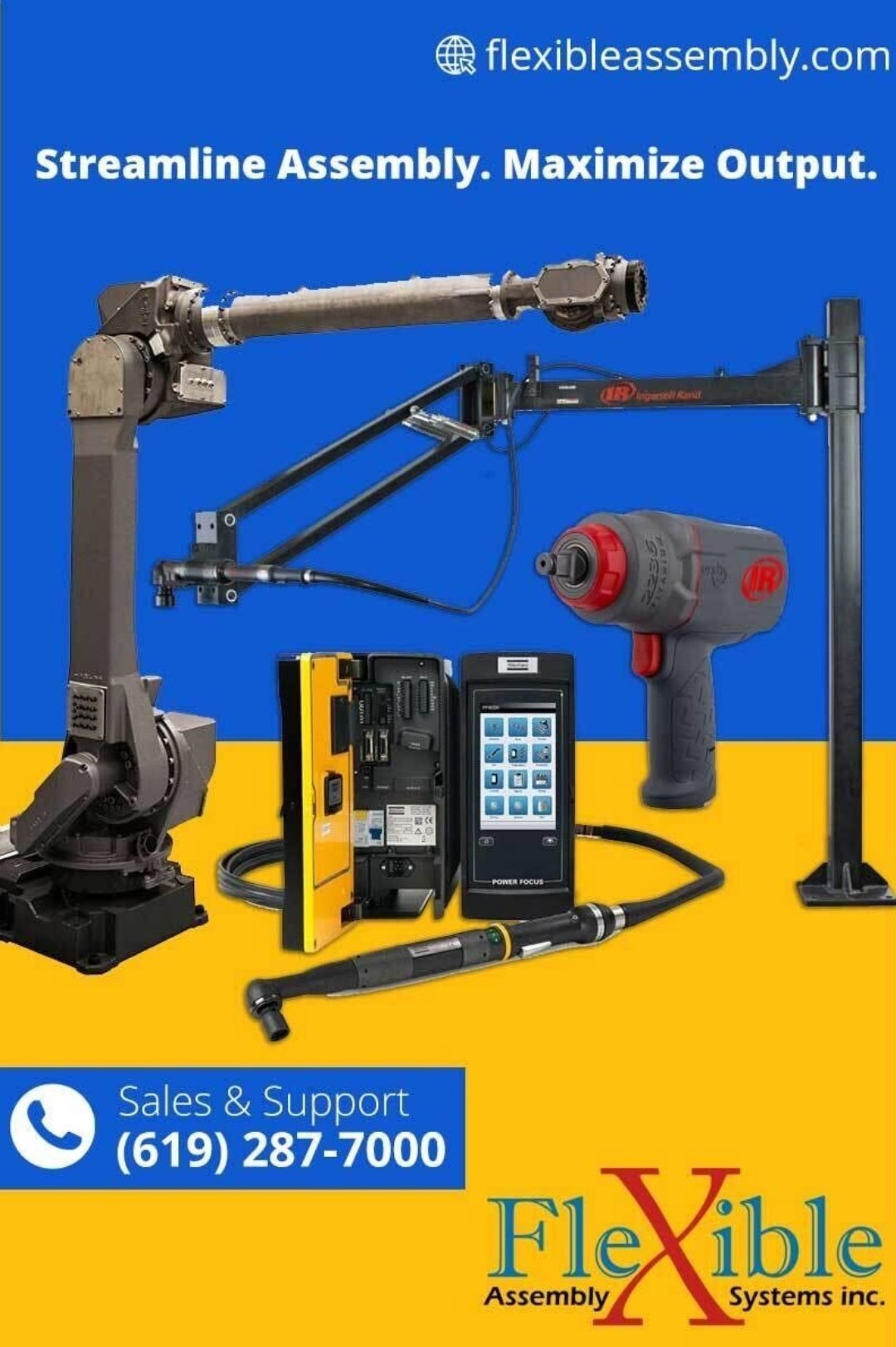Technology
Reducing Wrist Strain with Torque Arms and Torque Wrenches

Wrist pain can slow any assembly process to a crawl. You tackle repeat torque tasks all day long. Your wrist bears the weight of each fastener turn. Over days and weeks that load compounds. What if you could shift that load away from your wrist? You can. Torque arms and torque wrenches make that shift real. You gain precise control while your wrist takes a break.
In this post you’ll find an easy path to healthier wrists. We walk through root causes of wrist stress. We explain how a torque arm lifts tool weight and counters reaction torque. We show how a torque wrench puts exact force on a bolt. You’ll see best practices for shop layout and operator habits. You’ll get tips to pick gear that fits your line. By end you have a clear plan to cut wrist fatigue and boost output.
The Hidden Cost of Wrist Strain in Assembly Work
When you handle power tools or manual wrenches for hours you risk injury. Common issues include tendonitis, carpal tunnel syndrome, and joint wear. Pain leads to less focus and more errors. Missed torque targets mean rework on leak-prone fittings. You lose time and material. Staff downtime for therapy and rest adds cost too.
Consider these facts:
- Over 30 percent of factory floor injuries stem from joint stress
- Each lost-time incident can cost thousands in wages and repair
- Productivity drops up to 20 percent when operators nurse chronic pain
Wrist strain hits morale. Teams dread high-count torque tasks. They rush to finish. They cut corners on quality. A simple add-on device can reverse that trend.
How Torque Arms Cut Strain?
A torque arm clears two jobs at once. It carries the tool’s bulk. It pushes reaction torque into a fixed structure. That frees your wrist from recoil force and tool weight.
What Is a Torque Arm?
A torque arm mounts above or beside your workstation. A pivot joint links arm segments. At one end you clip a power driver or pistol-grip tool. At the other end you bolt the arm to ceiling rails or floor posts.
The pivot design does three tasks:
- It guides the tool through target angles
- It stops the tool from twisting your wrist
- It shifts weight to the rail or post
A counterbalance spring lets the tool float at any height. The spring pulls up and holds the tool. You grab the driver without lifting bulk.
Key Benefits for Operators
With a torque arm in place you see:
- Fastener torque reaction stops at the mount
- No wrist rotation from sudden torque spikes
- Tool weight never rests on your wrist
- Steady contact between driver bit and fastener head
- No fatigue from hold-up or brace posture
Each benefit reduces micro-trauma in tissues. Your wrist joint relaxes. Your grip stays steady. You hit torque marks first try and move on.
Role of Torque Wrenches in Precision and Health
A torque wrench delivers exact fastener force. It limits overtightening or undertightening. That part lives in every torque-sensitive assembly.
What Is a Torque Wrench?
A click-style wrench locks in at set force. You dial a value on a scale. You swing the lever. At target torque a pawl slips. You feel a click. You stop. Bolt meets spec.
Digital wrenches display real-time torque. They beep or flash once you hit the target. They log each pass to a wireless network.
Health Benefits Beyond Precision
A torque wrench offers more than repeatable torque. You hold it light. A click wrench stops you from jam-tight hunch. That cuts wrist twist. Your grip stays neutral. A balanced tool reduces strain on tendons. Over time your wrist avoids chronic stress.
Integrating Torque Arms and Torque Wrenches in Assembly Lines
A combo of torque arm and torque wrench makes a healthy station. Here is a flow to set it up.
- Assess task torque range
- List fastener sizes and torque specs
- Group tasks by similar torque values
- Select a torque arm model
- Match capacity to tool weight and reaction torque
- Pick a mount style (ceiling, wall, floor)
- Pick a click-type or digital torque wrench
- Ensure range covers spec spectrum
- Verify calibration certificate
- Install tool balancer spring
- Adjust spring tension to match driver weight
- Fine-tune tool float height to elbow level
- Mount quick-attach coupler
- Ensure tool clips on and off in one motion
- Prevent wobble at bit end
- Train staff on safe grab and release
- Show correct body posture
- Explain torque wrench click feature
- Monitor torque logs and feedback
- Track any off-target passes
- Note any wrist discomfort reports
This simple flow brings consistency. You gain speed and accuracy. You reduce fatigue and error rates.
Ergonomic Best Practices for Wrist Health
Even with the right gear you must follow safe habits. Apply these tips daily at each station.
- Switch tasks every 30 minutes
- Rest wrists for two minutes each hour
- Keep tool below elbow height
- Grip with neutral wrist alignment
- Stretch wrist flexor and extensor muscles
- Use light staple gloves for grip, not padding
- Place controls within easy reach
- Maintain clear foot space for stance shift
Healthy habits plus gear cut strain further. Your team feels more alert and ready.
Why Choose Flexible Assembly Systems?
Flexible Assembly Systems offers tools for any line layout. Our torque arm lineup fits ceiling grid, floor posts, or wall mounts with no welds. We include quick-attach couplers that lock extra tight but release fast. Our click-type and digital torque wrenches arrive calibrated to ISO standards.
You benefit from:
- Modular arms you expand as tasks grow
- Counterbalance springs fine-tuned to tool weight
- Wrenches that log torque data to your network
- On-site setup by our field service team
- Training guides and posture charts for operators
- A five-year warranty on arms and manuals
Install.flexible-arm and your line gains smoother workflow. Your crew stays healthy. Your quality reaches new highs.
Real-world Impact
An electronics plant cut wrist-pain work days by 75 percent after arm deployment. Technicians spent less time in joint therapy. Fastener rework fell by 40 percent.
An automotive supplier hit torque targets first pass in 99 percent of runs. They achieved that rate at higher line speed. Staff no longer paused to rub sore wrists.
Next Steps Toward Healthy Workstations
You can act today. Start with a wrist stress audit. Note each task that has more than five torque turns per minute. List torque ranges and tool models. Call a Flexible Assembly Systems rep for a free site review. We draft a layout that fits your bay. We tune each arm to match driver weight. We supply torque wrenches that carry your logo or part code. We train operators on quick-change grip and posture.
Pick a pilot line. Run it for two weeks. Track torque accuracy and discomfort logs. See fast payback in fewer errors and higher morale.
Your crew thrives when tools shoulder the load. You see better output with less downtime. A smart investment today pays off in healthy staff and smoother workflow tomorrow.
Empower your team to turn bolts without joint pain. Fit torque arms and torque wrenches from Flexible Assembly Systems now.
-

 Blog3 months ago
Blog3 months agoKate Garraway’s New Partner 2024: A Fresh Chapter Begins
-

 Health3 months ago
Health3 months agoCandizi – The Ultimate Game-Changer in Wellness and Lifestyle
-

 Blog3 months ago
Blog3 months agoUnited Airlines Flight UA770 Emergency Diversion
-

 Food3 months ago
Food3 months agoCalamariere: A Tasty Seafood Delight That Shines
-

 Blog3 months ago
Blog3 months agoTractor Supply Sales Associate Job Description (2025 Update)
-

 Blog3 months ago
Blog3 months agoPowerful 7-Step Guide to هنتاوي com: Boost Organic Traffic Now
-

 Technology3 months ago
Technology3 months agoExploring the Power and Potential of the 084.0-h8po Model
-

 Culture3 months ago
Culture3 months agoHis Majesty NWBKA: A Symbol of Royalty, Culture, and Legacy
